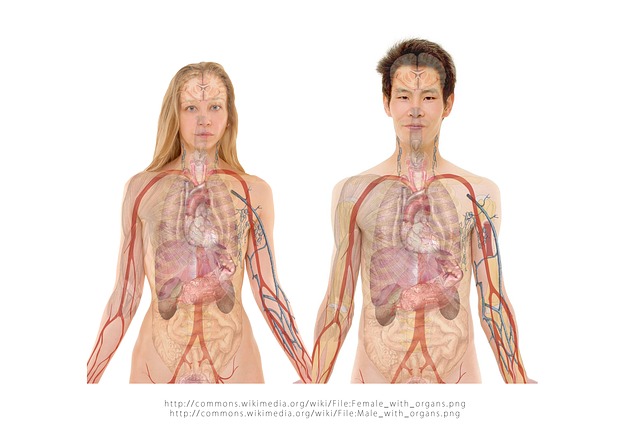Heart Funtion Anatomy
Did you know About?
Cardiovascular System Anatomy & Physiology
The heart is the pump responsible for maintaining adequate circulation of oxygenated blood around the vascular network of the body. It is a four-chamber pump, with the right side receiving deoxygenated blood from the body at low presure and pumping it to the lungs (the pulmonary circulation) and the left side receiving oxygenated blood from the lungs and pumping it at high pressure around the body (the systemic circulation).
The myocardium (cardiac muscle) is a specialised form of muscle, consisting of individual cells joined by electrical connections. The contraction of each cell is produced by a rise in intracellular calcium concentration leading to spontaneous depolarisation, and as each cell is electrically connected to its neighbour, contraction of one cell leads to a wave of depolarisation and contraction across the myocardium.
This depolarisation and contraction of the heart is controlled by a specialised group of cells localised in the sino-atrial node in the right atrium- the pacemaker cells.
These cells generate a rhythmical depolarisation, which then spreads out over the atria to the atrio-ventricular node.
The atria then contract, pushing blood into the ventricles.
The electrical conduction passes via the Atrio-ventricular node to the bundle of His, which divides into right and left branches and then spreads out from the base of the ventricles across the myocardium.
This leads to a 'bottom-up' contraction of the ventricles, forcing blood up and out into the pulmonary artery (right) and aorta (left).
The atria then re-fill as the myocardium relaxes.
animated heart
The 'squeeze' is called systole and normally lasts for about 250ms. The relaxation period, when the atria and ventricles re-fill, is called diastole; the time given for diastole depends on the heart rate.
Source: https://www.le.ac.uk/pa/teach/va/anatomy/case1/frmst1.html![1.jpg]
Image source: https://pixabay.com/en/woman-human-pair-man-face-body-254133/
Hi! I am a robot. I just upvoted you! I found similar content that readers might be interested in:
https://www.le.ac.uk/pa/teach/va/anatomy/case1/frmst1.html
@ cheetah, thanks for the update. keep up the good work